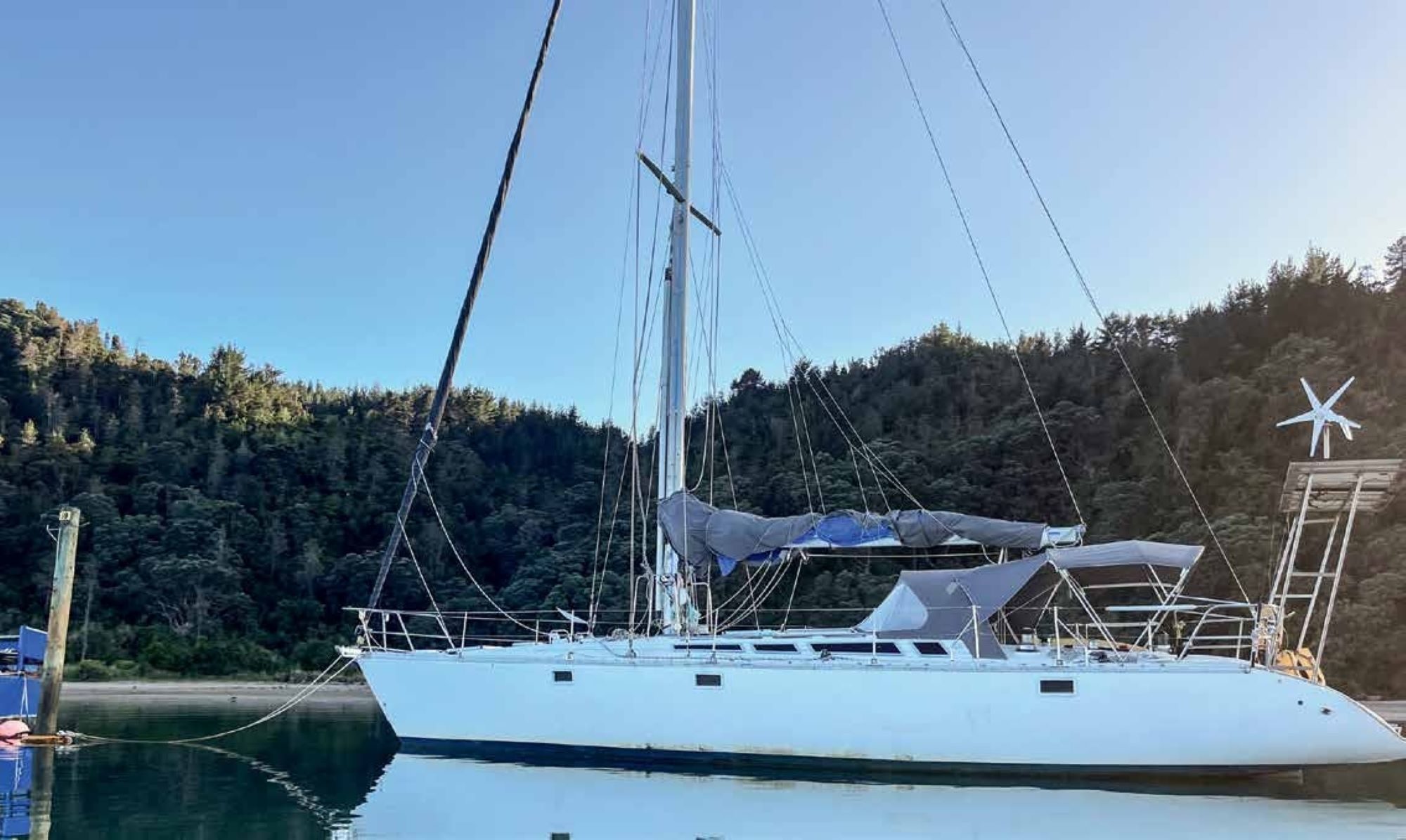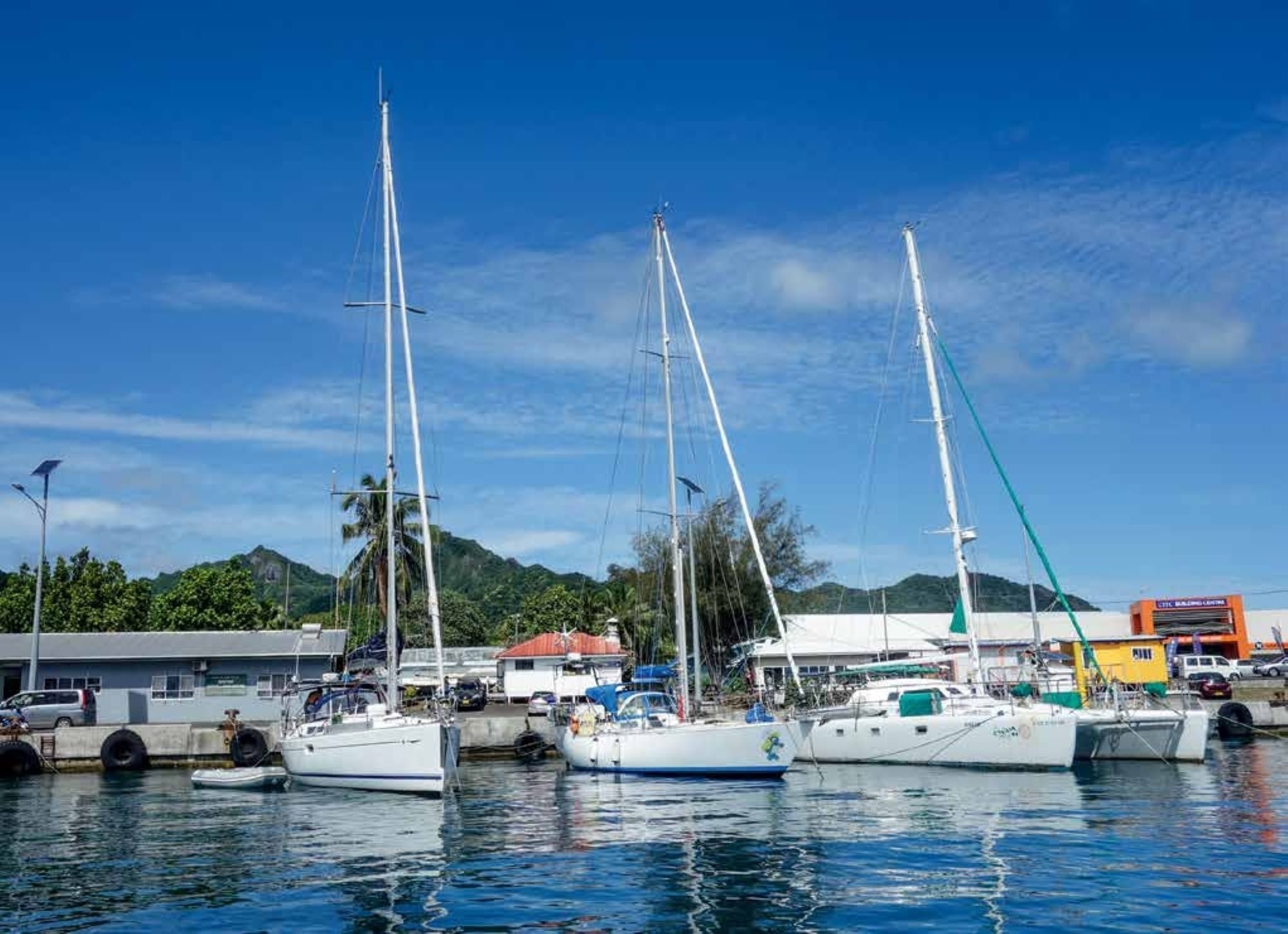

As our two boys, Rafe and Chris, have discovered when you’re living onboard, life will throw you curveballs.
Last December we moved Sauvage, our 1989 Jeanneau Sunkiss 47 sloop, from a swing mooring located at Catalina Bay (Waitemata Harbour) to Wentworth River, aka Whangamata Harbour, for the summer, where she now sits between pole moorings.
Whangamata is a smallish Coromandel town, swelling in population over summer. We visit Sauvage any chance we get. On our first weekend’s visit, I was delighted to bump into and chat with Boating New Zealand readers who had also moored their cat in the Harbour.

Heading home to Cambridge that Sunday, we stopped in at the Whangamata main street where Rafe (17) and Chris (15) found casual summer work, starting immediately. Kirsten and I were needed at work, so decided to set the boys up to live on Sauvage. We did a quick round-trip home to get what teens need to survive but had no time right then to create the perfect liveaboard.
Our water maker had stopped working, again! We needed a workaround until I could diagnose and fix it. No problem.
For drinking water, a 10-litre refillable water container from the supermarket would do. For a shower, they’d use the beach showers.
And with that, little bits of their lives became routine: work, grocery shopping, cooking, tidying (very occasionally, they’re teenagers after all), visiting the laundromat, going to the town library, and the obligatory, swimming and surfing.
All doable, but heavily reliant on the tender to get to and from shore. Rafe, who had been hesitant driving the tender, suddenly became skilled; that, or be totally reliant on his younger brother to get him anywhere.

Being by themselves has made them more responsible: they no longer have that initial urge to panic when things go wrong. Once, they forgot the kill switch key for the tender, and when it wouldn’t restart, they worked out they could row to the closest point across the harbour and walk the tender closer to Sauvage.
Rafe was stung by a bumblebee – his entire foot and ankle swelled like the Michelin Man. Then he got Covid. Chris’ body was bitten all over by invertebrates that live in the ocean at Whangamata – the pharmacist reassured him that it was a common occurrence at this time of year. When Chris couldn’t get back to Sauvage as Rafe was onboard with the tender (and his broken mobile phone) – and having waited a few too many hours for contact that never happened – Chris hitched a lift to the boat with the Coastguard.
We’ve hosted a couple of onboard BBQs. With our guests we watch other boats, sit in the sun, chat, relax until the fishing rods come out in the (vain) hope of catching fish to add to our dinner. At one event, a guest threw the SUP into the water without it being attached to Sauvage. Neve jumped in to save it. When it’s not slack tide, the current is strong. She made no headway getting back to Sauvage so I had to jump in as well. That current is strong! In the end, Chris Jnr had to come and collect us in the tender although we were only a short 25m away!
The boys lived on Sauvage through all weather. They’re not afraid to take the tender in the dark, in wind, or in rain. And they learned good judgement: in 40-knot gusts in early February bringing unusually high waves in the river that tossed Sauvage around between the mooring poles, making for a very bumpy and uncomfortable time, they stayed onboard and waited it out.

This summer that damned outboard motor has been the bane of my life! We had discussed with the boys the refuelling steps – theoretically they knew the required fuel mix. But knowing and doing are totally different. I missed their call to help them go through the process the first time. Kirsten provided advice, inadvertently telling them to fill our two-stroke tank with diesel. Oops! You guessed it, the motor stopped in the middle of the harbour.
Once the boys had rowed back to Sauvage, and after the first onset of panic after thinking the motor was completely kaput had abated, I (over the phone) got them to empty the diesel out of the motor and replace it with petrol and two-stroke oil, then to keep trying to start it until it worked again. With patience (a great learning experience in itself) it finally started. Piles of smoke, but it was running!
After a few days, every once in while the motor would just stop, typically while the boys were traversing the Harbour – and it began to happen more frequently. This resulted in Rafe and Chris learning Wentworth River’s tidal flow – was it high tide, low tide or slack tide – and what their next decision would be. Row or tow? They quickly became expert rowers – much easier at slack tide – but when the current was too strong and they were unable to make headway, they became experts at asking for a tow. And when they couldn’t trust the distance, they’d identify the closest point to land.
Next visit, I disassembled the carburettor, giving it a good wash in petrol. It ran wonderfully for a couple of days, but soon began stopping again. This time I tracked the problem to sand in a gravity filter on the back of the fuel tap. I now suspect that the sand, which was thick in the filter, had been there for years but the diesel glugged it up, making it all-but-impossible for petrol to flow through it.
A week later, it stopped again. I was almost out of options, so I bought a new in-line fuel filter and installed that, and voila, it now works a treat. I now know the outboard motor inside out, which has to be a good thing.
Now to the water maker so the boys didn’t have to keep returning to land to get water. The incoming sea water wasn’t flowing fast enough for the water maker to maintain pressure on the saltwater side. I cleaned around the water inlet on the underside of Sauvage, removing a number of little encrusting animals, which fixed the saltwater pressure. But water maker still only made 10 litres an hour instead of the expected 40-60 litre per hour.
I took the RO filter out and gave it a jolly good clean. When water alone didn’t clean the filter deeply, I resorted to using a mix of baking soda and vinegar and running this over and through the RO filter. After the cleaning – a few good hours invested – we were back to normal throughput and putting fresh water in the tank.
When not working, we’ve enjoyed spending time relaxing on Sauvage. We watch other boats head in and out of the harbour, waving out a “hello” as they motor past. The Harbour Master is often seen around, stopping and talking with the locals, making sure people are wearing life jackets, and motoring at the right speed. Multiple times, we’ve seen the Coastguard towing other boats back into the harbour. Once, late at night, the Coastguard towed a sailboat full of teenagers back to their mooring.
Whatever their stories are, we’re pleased that water safety is a high priority. BNZ




